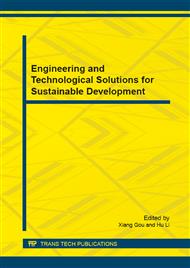p.504
p.509
p.514
p.523
p.528
p.532
p.536
p.542
p.549
Analysis of Energy Consumption Carbon Emissions in Hunan Province Based on Industrial Structure
Abstract:
Hunan province energy consumption carbon emissions based on the industrial structure was analyzed with carbon emissions factor method in 2000-2012. Results show that Hunan province’s carbon emissions have a rapid growth in 2000-2012. Since 2007 the growth of carbon intensity is slowly, and there is an emergence of signs of decline. Recently the correlation between the growth of GDP and carbon emissions in Hunan Province becomes weakening, but carbon intensity is still higher. Industry occupies a dominant position in the energy consumption carbon emissions. Since 2007 the proportion of industrial carbon emissions is decreased form 79.41% to 72.30% in 2012, there is an obvious decline. Recently, the growth rate of industrial carbon emissions is relative lower. The growth of carbon emissions from the construction industry and the tertiary industry is the most obvious. Relevant policies should be formulated as soon as possible, to promote the level of construction technology, control energy consumption and carbon emissions per unit of output.
Info:
Periodical:
Pages:
528-531
Citation:
Online since:
November 2014
Authors:
Price:
Сopyright:
© 2014 Trans Tech Publications Ltd. All Rights Reserved
Share:
Citation:


